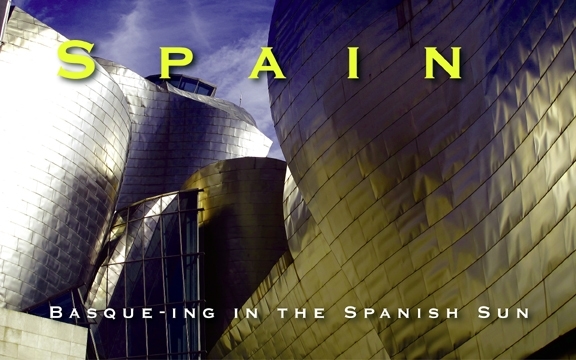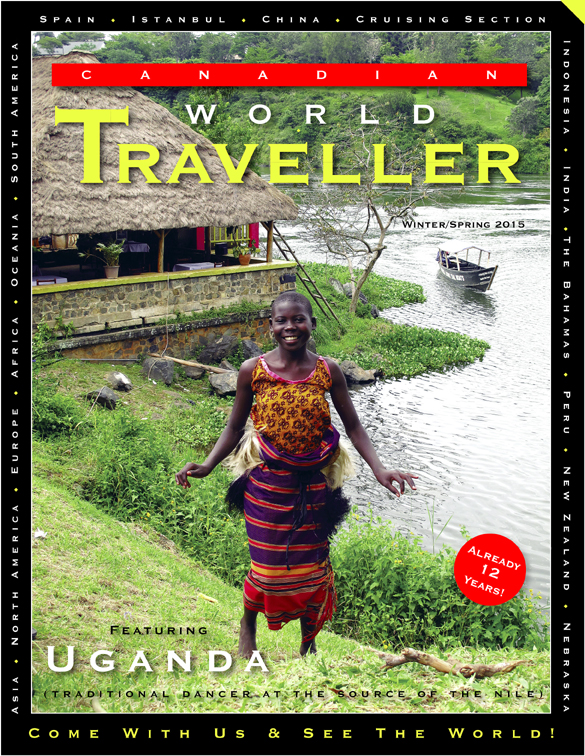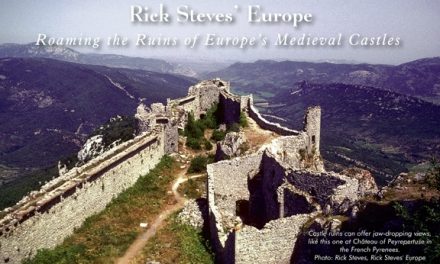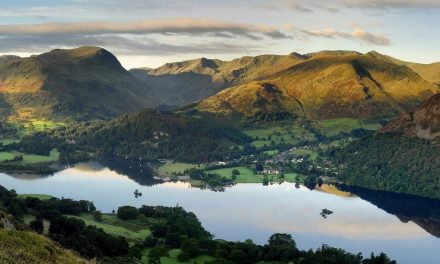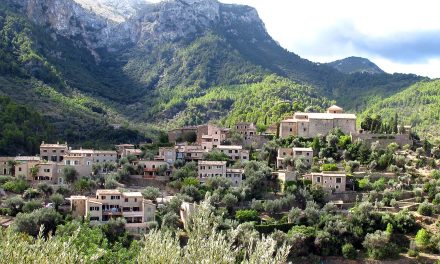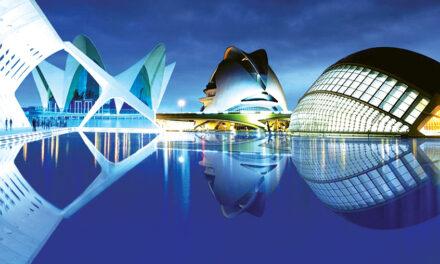Spain
Basque-ing in the Spanish Sun
by Michael Morcos

Flying into Basque country, a person cannot help but be impressed by the variations in both architecture and countryside. Vineyards blend into fields of fresh produce, and country villages neighbour cities whose buildings reflect both the old world and the new.
Or trip included 3 cities in Basque country Vitoria-Gasteiz, San Sabastien and Bilbao.
The streets of Vitoria-Gasteiz are filled with Mediterranean staples. Sandy coloured houses with clay tile roofing, food vendors and smiles on many a tourist face. Although the city has many beaches, the historical landmarks are what makes the city really stand out, starting with the Marques de Riscal Winery in Rioja-Alavesa. Just outside Vitoria, this winery is one of the oldest Rioja wineries. Founded in 1858, it has been a reference in the winemaking business at both national and international level. Since that time, the winery has expanded its grounds to welcome guests to a fact and fun filled visit.
We were offered several wines for tasting and a tour of the grounds. In the center of the Marqués de Riscal wine cellars, a massive project named the City Of Wine has been created. Canadian architect Frank O. Gehry has given shape to the cellars’ spirit by blending innovation and tradition into a single building. Using the most modern materials available, the City of Wine is one of the most ambitious projects ever undertaken in Spanish wine cellars to date. Within the walls lies the oldest of the cellars of Marqués de Riscal, dating from 1858, as well as its later 1883 extension. Surrounded by extensive vineyards, the installations preserve the extraordinary charm of the vineyard’s origins, and with the addition of a luxury hotel, combined with the rich beauty of the landscape and the other installations, Marqués de Riscal offers an unmatchable experience to visitors.
Rising majestically from the old city, the Cathedral of Santa María’s regal spires are a reminder of the gothic style of the late 13th century and all throughout the 14th century. Originally conceived as a church-fortress, it was a vital part of the city’s defences, though from 1496 the building operated as a collegiate church until it was declared a cathedral in 1861.
As a travel destination, it is a must see. The Santa Maria Cathedral Foundation, which manages guided tours, is also in charge of the restoration works happening – a fascinating and complex project. Watching the architects, archaeologists, stonemasons, and builders work on the artistic masterpieces of this 13th-century sanctuary, is a lesson in detail!
The facade’s monumental sculptures are amazing artistic creations, with the western portico being a true masterpiece divided into three portals: the central one consecrated to the Virgin, the left one dedicated to San Gil and the right one to the Final Judgement and Saint James, absolutely breathtaking!
Known primarily as the tourist destination in Spain, San Sabastien was our next stop. Instead of the beach, though, we were treated to a tour of a sardine and mackerel canning facility in Getaria, a fishing village, to get a feel for the one of the local industries.
Though there is a pungent odor for sure, the process we were witness to is something to behold!
San Sebastien is filled with history and there is something interesting to do, see or watch in every corner of this lovely city.
We embarked on a guided visit of the Balenciaga Museum, definitely a one-of a kind experience. The museum is located in Getaria, a small town about 25 KM west of San Sebastian, and is dedicated to the famed revolutionary French designer Cristobal Balenciaga. I had never before been to a museum dedicated to ”Haute Couture” museum . Even if you don’t know who he is or don’t care much about Haute Couture, it is worth the visit, as the building is a wonderful structure in itself and larger than expected with great views over the old town.
Next came one of my favorite experiences, the tour of the Old Part of the City, famous for its restaurants. Before the trip, I had been told that “You’ve got to try the pintxos, Basque food is the best in Spain!” Basque pintxos (the Basque word for pinchos, which is another name for ‘tapas’) are like tapas, but better. The Spanish are typically very proud of their own region and rarely complement their neighbours, but even people from Andalusia and Madrid had to admit that Basque pintxos were best in Spain. And they were right. Our tour of the Parte Vieja (Old Town), filled with bars and Cider houses, and offering generous amounts of mouth watering pintxos. Later on, we enjoyed a traditional dinner of cod omelette, fried cod with green peppers, steak, cheese with apple jelly and walnuts and cider. A tasty end to ful-‘filling’ day!
Luckily, the next day started with a way to burn off some of that deliciousness, as we were offered lessons in the “the fastest sport in the world”, Jai alai. Considering that the sport once held the world record for ball speed, with a 140 g ball covered with goatskin that traveled at 302 km/h (188 mph), the title is deserved! The sport consists of a ball bounced off a walled space by accelerating it to high speeds with a hand-held basket-like device (cesta). Upon learning, I am proud to say that I became quite the player, and the Star of our little team!
Bilbao is the capital of the province of Biscay in the autonomous community of the Basque Country and is one of the most populous metropolitan areas in northern Spain. Filled with history, our first lesson was offered during our visit to the Vizcaya Bridge (Bizkaiko Zubia in Basque), a UNESCO World Heritage structure and it is the oldest river crossing bridge . In a few words, this amazing red masterpiece perfectly combines beauty, aesthetics and functionality.
The Vizcaya Hanging Bridge is one of the most outstanding constructions from the European Industrial Revolution and was a marvelous innovation in the known means of transportation. It is a must –see sight for anyone interested in the history of iron works and bridges. A sort of “shuttle” hangs from the structure and it transports cars, bikes and people from one side of the river to the other by lifting it with cables and wires. If you don’t suffer from vertigo, don’t miss this experience. Just take the lift to the top level , then walk and cross the river on the footbridge and see the Cantabrico sea and the river.
The highlight of the city was a guided tour of the Guggenheim Museum. Located in a beautiful area, the location and exterior of the building are wonderful, unique and ideal for picture taking! The area can be a whole day family experience, with walkways, cycle paths, children’s play park and more.
The outdoor sculptures are also quite amazing, Jeff Koons Flower Puppy and Tulips, and silver balls by Kapoor, and the inside of the building is also really interesting, architecturally. Inside the museum, the huge spaces are meant to impress. The galleries on the second and third floor are truly amazing. The third floor’s collection, although not very numerous, is top quality, with some very important works from some of the most important names in modern art. If you are new to modern art, just get the audio guide because their collections are really world class.
Fortunately we were staying in a central area and the Carlton Hotel is walking distance to most the museums and the Old Town. As one of the oldest hotels in the city it is grandiose and high ceilinged, and probably has the largest hotel rooms I’ve stayed in. if you want a chic boutique style hotel then this is not for you, the Carleton is old-school and classic. The staff was courteous and proud of their Hotel, and our stay was very comfortable.
Stepping out the doors of the hotel, we had a walk around the Old Part of the city. The area is probably the most colorful part of Bilbao, and has many shops and taverns, several historical churches and large food markets and is connected to the rest of the city by subway, tramway and buses.
We ended our tour with a lovely dinner at the Mina restaurant which has one Michelin star. We had the 10 course supper and loved most of the creative dishes. Highlights were the lemon grass mussels, coconut soup and the Mackerel. The service was excellent, friendly and very knowledgeable, and a sommelier did an excellent job pairing the wine. The atmosphere is very relaxed and the perfect place to end our vacation with style!
Visit: www.spain.info/en_CA/

